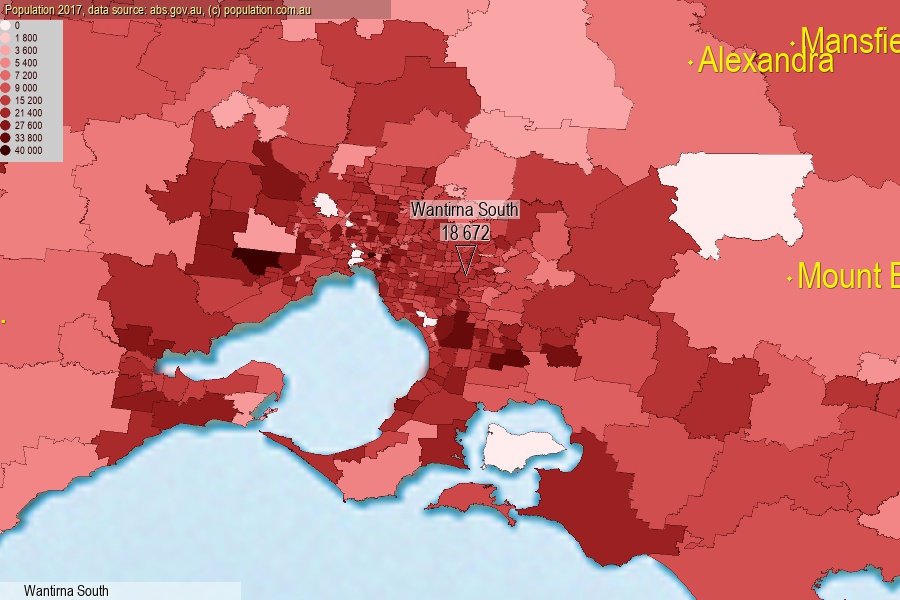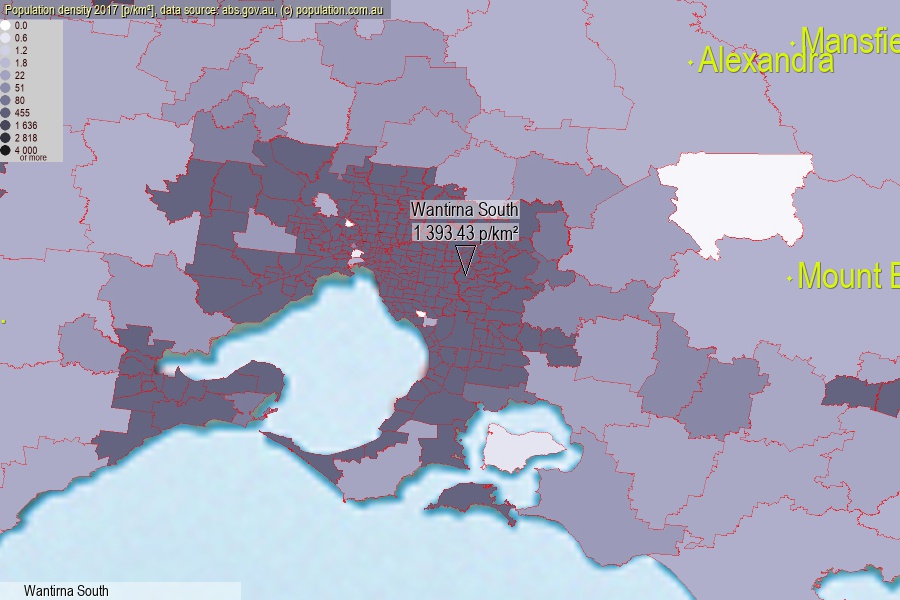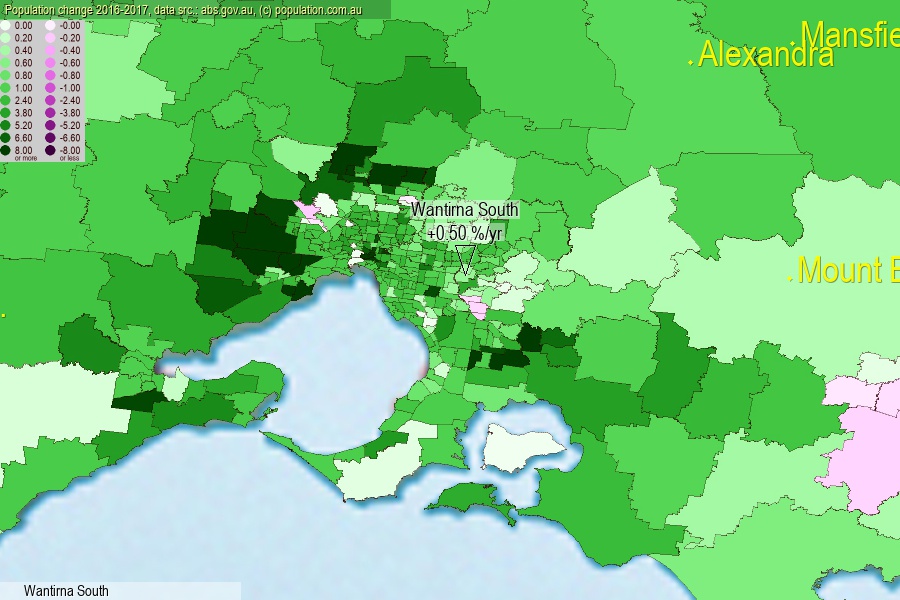 population.com.au
population.com.auLast official estimated population of Wantirna South (as Statistical Area Level 2) was 18 672 people (on 2017-06-30)[2]. This was 0.08% of total Australian population and 0.29% of VIC population. Area of Wantirna South is 13.40 km², in this year population density was 1 393.43 p/km² . If population growth rate would be same as in period 2016-2017 (+0.5%/yr), Wantirna South population in 2025 would be 19 425. [0]



Click to enlarge. Wantirna South is located in the center of the images.
Population [people], population density [p./km²] and population change [%/year] [2]
View borders » (new window) [4]
[1991-1992] +0.22 %/Yr.
[1992-1993] +0.09 %/Yr.
[1993-1994] +0.09 %/Yr.
[1994-1995] +0.18 %/Yr.
[1995-1996] +0.63 %/Yr.
[1996-1997] +2.23 %/Yr.
[1997-1998] +2.24 %/Yr.
[1998-1999] +0.85 %/Yr.
[1999-2000] +0.07 %/Yr.
[2000-2001] +0.66 %/Yr.
[2001-2002] +0.92 %/Yr.
[2002-2003] -0.09 %/Yr.
[2003-2004] +0.19 %/Yr.
[2004-2005] -0.04 %/Yr.
[2005-2006] +0.48 %/Yr.
[2006-2007] -0.22 %/Yr.
[2007-2008] +0.39 %/Yr.
[2008-2009] -0.03 %/Yr.
[2009-2010] -0.19 %/Yr.
[2010-2011] -0.51 %/Yr.
[2011-2012] -0.01 %/Yr.
[2012-2013] +0.37 %/Yr.
[2013-2014] +0.45 %/Yr.
[2014-2015] +0.61 %/Yr.
[2015-2016] +0.78 %/Yr.
[2016-2017] +0.50 %/Yr.
[0] Calculated with linear interpolation from officially estimated population
[1] Read more about SA2 and Australian Statistical Geography Standard (ASGS) on abs.gov.au
[2] Population data from Australian Bureau of Statistics (Population and density: 2017; change: 2016-2017)
[3] Digital Boundaries: Australian Statistical Geography Standard (ASGS) 2016.
[4] Border coordinates are simplifyed using Ramer-Douglas-Peucker algorithm.